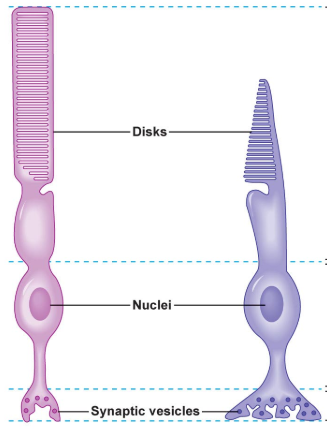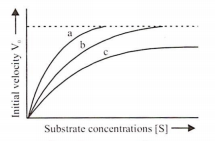 Multiple Choice Questions
Multiple Choice QuestionsGiven below is a table comparing the effects of sympathetic and parasympathetic nervous system
for four feature (a-d). Which one feature is correctly described
| Feature | Sympathetic nervous system | Parasympathetic nervous system |
| a) Salivary glands | Stimulate Secretion | Inhibit Secretion |
| b) Pupil of the eye | Dilate | Constricts |
| c) Heart rate | Decreases | Increases |
| d) Intestinal peristalsis | Stimulates | Inhibits |
Which one of the following animals is correctly matched with its one characteristic and the taxon
| Animal | Characteristic | Taxon |
| Millipede | Ventral nerve cord | Arachnida |
| Duckbill platypus | Oviparous | Mammalia |
| Silverfish | Pectoral and pelvic fin | Chordata |
| Sea anemone | Triploblastic | Cnidaria |
All mammals without any exception are characterised by
viviparity and biconcave red blood cells
extra-abdominal testes and a four chambered heart
heterodont teeth and 12 pairs of cranial nerves
a muscular diaphragm and milk producing
glands.
Which one of the following pairs of the kind of cells and their secretion is correctly matched
| Oxyntic cells | a secretion with pH between 2.0 and 3.0 |
| Alpha cells of islets of Langerhans | secretion that decreases blood sugar level |
| Kupffer cells | a digestive enzyme that hydrolyses nucleic acids |
| Sebaceous glands | a secretion that evaporates for cooling |
Examine the diagram of the two cell types A and B given below and select the correct option

A B
Cell A is the rod cell found evenly all over retina
Cell A is the cone cell more concentrated in the fovea central is
Cell B is concerned with colour vision in bright light
Cell A is sensitive to low light intensities
A cricket player is fast chasing a ball in the field. Which one of the following groups of bones are directly contributing in this movement
Femur, malleus, tibia, metatarsals
Pelvis, ulna, patella, tarsals
Sternum, femur, tibia, fibula
Tarsals, femur, metatarsals, tibia
A lizard-like member of reptilia is sitting on a tree with its tail coiled around a twig. This animal could be
Hemidactylus showing sexual dimorphism
Varamus showing mimicry
garden lizard (Calotes) showing camouflage
Chamaeleon showing protective colouration
The figure given below shows three velocity substrate concentration curves for an enzyme reaction. What do the curves a, b, and c depict respectively

a-normal enzyme reaction,
b-competitive inhibition,
c-non-competitive inhibition.
a-enzyme with an allosteric modulator added,
b-normal enzyme activity,
c-competitive inhibition
a-enzyme with an allosteric stimulator,
b-competitive inhibition added
c-normal enzyme reaction
a-normal enzyme reaction,
b-non-competitive inhibitor added
c-allosteric inhibitor added
A person who shows unpredictable moods, outbursts of emotion, quarrelsome behaviour and conflicts with others is suffering from
borderline personality disorder (BPD)
mood disorder
addictive disorder
schizophrenia.
The type of epithelial cells which line the inner surface of Fallopian tubes, bronchioles and small bronchi are known as
squamous epithelium
columnar epithelium
ciliated epithelium
cubical epithelium
C.
ciliated epithelium
Ciliated epithelium is a region of epithelium consisting of columnar or cuboidal cells bearing hairlike appendages called cilia, that are capable of beating rapidly. Ciliated epithelium performs the functions of moving particles of fluids over the epithelial surface.
Cubical ciliated epithelium occurs in certain parts of uriniferous tubules whereas columnar ciliated epithelium occurs in fallopian tubules, nasal passages, bronchioles, small bronchi and buccopharyngeal cavity of frog. It often occurs in the vicinity of mucus secreting goblet cells. Squamous epithelium are found in !inning of alveoli in the lungs and Bowman's capsule in the kidney. Columnar epithelium are found in the lining.
